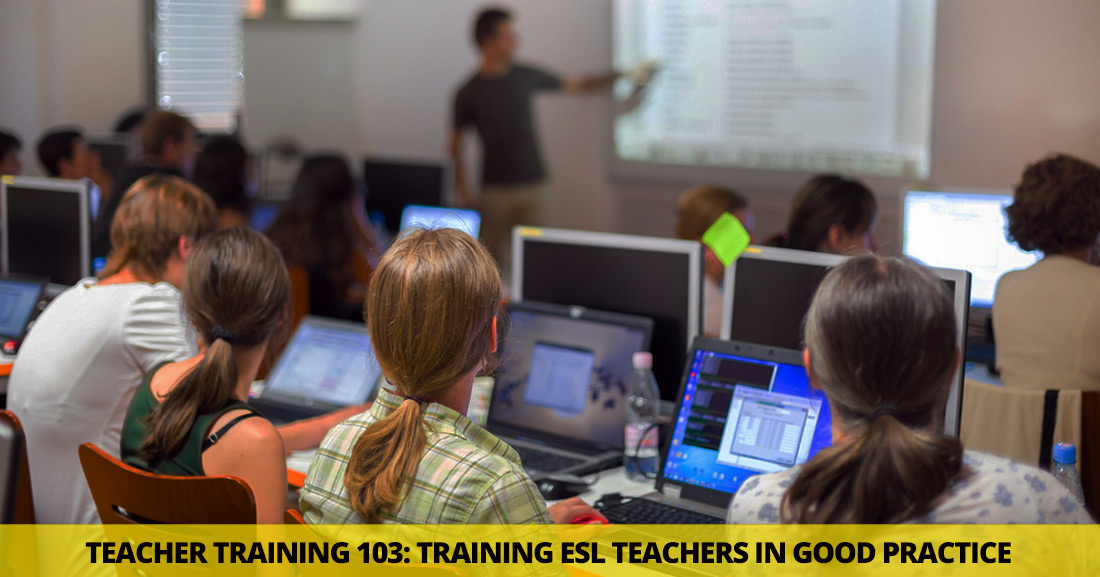Climbing Mt. Impossible: How to Demonstrate a Zero-L1 ESL Environment


I’ve always been fascinated by how different cultures tackle the problem of language learning, and especially the issue of practice. What would we see, I wonder, and how different would the approaches be?
Practicing seems to mean different things to different people, but we can probably all unite behind the idea that the intention of practice is to improve the student’s ability in some way. If we’re dealing with a practical skill, like baking bread or playing the clarinet, then practice is intended to produce a more pleasing crust or a more nimble set of scales. These things can be measured, from day to day, and progress charted objectively, at least to some extent.
Language skills might seem different, and perhaps harder to measure, because there are so many different ways to express a given point, and often a variety of opinions as to what constitutes ‘correctness’ or even ‘fluency’. But I believe we can approach practicing English in just the same way the baker or clarinetist strives to improve; by consistent, daily attentiveness to the areas of their field which need the most work. That tricky A-flat minor scale will only fall under their fingers once the muscle memory has absorbed it; and kneading the dough will only yield results when done thoroughly and for the right amount of time.
That may be a little too bold a statement, but my point is that, without practice, meaningful language learning is basically impossible. We’ve all heard of students – often, though not exclusively, from Asia – who have spent decades silently memorizing lists of vocabulary and reading grammar texts, but have scarcely ever held a conversation in English. These people can surprise us with impressive levels of fluency and confidence when speaking – I’ve seen it happen – but the vast majority of language learners need something else. For them, and for me, good practice is the smooth and regular use of language knowledge; the information originates in those quiet storage areas of the mind, and the process is completed when the language emerges out into the world in the form of speech.
The language hermits who enjoy memorizing are, for me, rather missing the point. I applaud their efforts, and like I say, this approach can produce extraordinary levels of aptitude, but research is repeatedly finding that language learning happens best in social, interactive groups. This dictates the style of our practice: most of it is going to be spoken and conversational in nature. I believe this is just how it should be, because the majority of our students (some exceptions notwithstanding) will spend their lives engaging with English primarily as a spoken medium.
This tells us that, when planning our lessons, we need to give priority to practice. In a forty-minute high school ESL class, for instance, I’d probably earmark at least half of the class time for different types of practice; commensurately, I’d prepare thoroughly so that my presentation could be completed in a quick, four-minute burst. I make use of Interaction Patterns, ensuring that I keep the T-S (teacher to student) work brief, quickly move onto the T-S-T section (drill) and then begin the longer and much more interesting S-S (student to student) work.
The traditional ESL model, to which I still subscribe, sets out this lesson structure:
Presentation – Practice – Review
It’s simple and reliable, and my trainees hear it so often that it has become something of a sacred mantra. However, I’m not above blurring the lines between those sections, so that the students can begin practicing the language within seconds of first encountering it. One example of this is my preferred method of presenting new material, which is highly interactive. The idea of a teacher standing there and explaining at length while the students write things down (or, just as likely, space out and goof off) has probably had its day. The new generations of students aren’t going to sit still for such long-winded methods; I empathize, because at high school, my classmates are I only tolerated lecture-style teaching through fear of punishment.
I invite my trainees to try something different. Here’s a terrific example from an elementary class in which the teacher is presenting body vocabulary; the class has already learned to ask and answer questions based on ‘how many’:
| Teacher: | OK, everyone, raise your hands, please! |
| Students: | (half raising hands, half a little confused) |
| Teacher: | That’s right (gesturing) your hands! Raise them up! |
| Students: | (All raising their hands, giggling a bit) |
| Teacher: | Awesome! How many hands do you have? (Curls a hand to her ear, inviting a chorus response) |
| Students: | Two! |
| Teacher: | And fingers? (gesturing, counting them silently) How many fingers do you have? |
| Students: | Ten! / Eight! |
| Teacher: | We have eight fingers, but what are these? (gesturing with thumbs) |
| Students: | Fingers? / Don’t know / Mu Zhi (Chinese for ‘thumb’) |
| Teacher: | Thumbs! I have two thumbs. Do you have two thumbs? |
| Students: | Yes! |
| Teacher: | (Immediately moves onto modeling the first practice exercise.) OK, how many fingers? (Shows eight fingers to a student in the middle of the class?) |
| Student 1: | Eight! |
| Teacher: | Awesome! How many fingers? (Shows six to another student) |
| Student 2: | Seven! (laughter) No, six! |
| Teacher: | Six is right! Now, how many thumbs? (shows one big thumbs-up) |
| Student 3: | One! |
| Teacher: | (Prepared already to tackle the ‘th’ sound) Everyone watch me (points to her mouth and exaggerates the tongue position for ‘th’). Thumb! |
| Students: | Thumb! |
| Teacher: | (Very quick individual drills, around the class) Good, now, show us! (Gesturing for student 3 to take over and ask their neighbor/partner) |
| Student 3: | How many fingers? (shows nine fingers to their partner) |
| Student 4: | Nine! |
| Teacher: | Great! Let’s go! (Walks down the aisles of desks, gesturing quickly to organize the whole class into pairs. She repeats the target question as she goes, and checks pronunciation, so the whole class can begin to practice.) |
I was observing this teacher in China as part of a professional assessment, and she had already earned two gold stars for such an energetic, interactive presentation session, and for moving so quickly from presentation to practice. She then earned a third star for clearly modeling the practice exercise and using gestures to organize the students into pairs. Within ninety seconds of first hearing the word, the whole class of 120 students were diving into the pairwork practice, repeatedly producing the target language as part of a little conversation. Three gold stars. Take a bow.
The above ‘thumb’ conversations would fall into the category of ‘controlled practice’, that is, practice which takes place within clearly defined parameters, placing the target language in a useful and typical context for quick familiarization. But to graduate from a simple “How many fingers?” to a rather more nuanced “My ring finger is longer than my index finger”, we need to guide the students to try more complex types of production. This is the role of free practice and, if you ask me, this is the most fun an ESL professional can have.
I help my trainees to make this transition by building on the controlled practice work. First, they would check that everyone knows what a ‘finger’ is; the students might wave some at the teacher, count how many they have, or carry out a little exchange like the one above. Then, we need to give the students a reason to produce more complex sentences. Language doesn’t happen in a vacuum, and classroom practice should reflect reality, when possible.
So, the passionate and confident Chinese teacher in the above example finished teaching four more body words, and then revealed four prepared posters of hilariously misshapen monsters. She quickly attached these to hooks on the classroom walls, and then divided the class into four sections, inviting every pair within each section to team up and prepare a description of the monster. Again, this is within only a few minutes of first learning the words.
Once the sentences were written down (necessitating the practice of all four skills – speaking, listening, reading and writing - which gained her a fourth gold star of the day) and she had monitored the practice by quickly moving from pair to pair, she invited feedback from one of the teams:
| Teacher: | OK, team 2! Let’s describe your monster! |
| Team 2 student A: | The monster has seventeen fingers! |
| Teacher: | Yes, he does! What a strange monster! (Indicates for another student from the team to contribute.) |
| Team 2 student B: | And the monster has five arms! |
| Teacher: | Really? |
| Students: | Six! / Six arms! |
| Teacher: | Try again? |
| Team 2 student B: | The monster has six arms! Sorry, teacher. |
| Teacher: | No problem! (Elicits five more sentences from Team 2, then glances at the clock and knows its time to move on). Perfect, thanks, Team 2! Now, Team 3, what about your monster? |
What impressed me most, alongside the terrific pace and energy of the class, was the sheer amount of the target language being produced. Within just sixteen minutes of first encountering the vocabulary, the students had:
I’m proud to cite this example, especially given the rather traditionalist views on education which often prevail in western China. My trainee was bucking the trend, designing her own materials, and creating a vibrant classroom environment. This was a very welcome change of scenery for her students, as well as an unprecedented and important statement to her old-guard departmental leadership: Communicative, zero-L1 ESL learning can be a brilliant success, and our students absolutely love it.
I assign homework if further practice is needed. Remember that assigning homework isn’t compulsory, and that it should always be a useful reinforcement. It’s additional practice, but it’s most likely done in silence (except if you’re able to organize study groups, which can be a really effective, multi-skilled practice opportunity), so for me, it can only confirm and consolidate the classroom work, and never replace spontaneous, conversational language practice.
How do we know when our students have had enough practice? Well, you’re the final judge, but most teachers would agree that the language point has been learned when:
It fulfills one of my main aims: my students will be able, by the end of the class, to use language in a way they could not at the beginning. If you’re a new teacher, organizing practice, modeling exercises and monitoring your students can all seem a little daunting. With practice (there’s that word again!) it’ll become easier, and you’ll find yourself adopting efficient routines which speed the process and help your students produce lots of language, even immediately after first learning it.